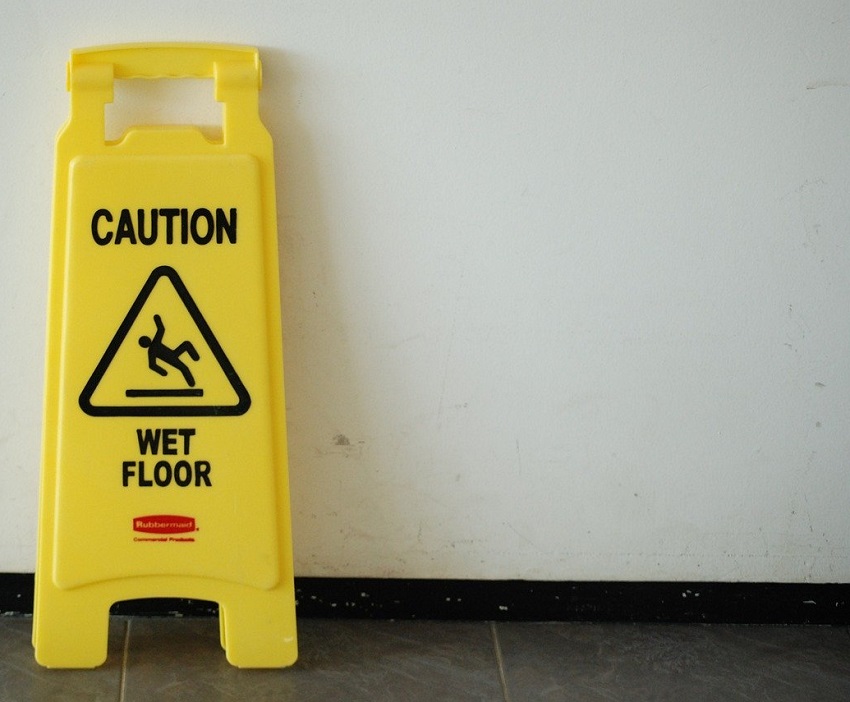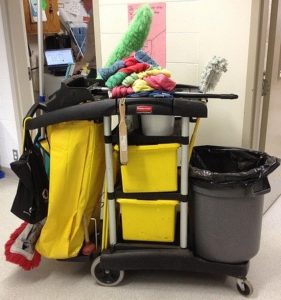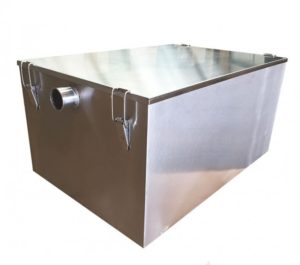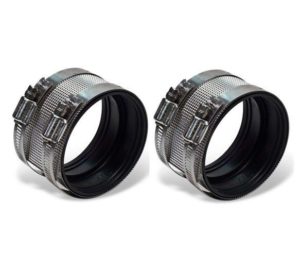
Grease traps save the planet and they save you from water company fines by managing your kitchen’s output of fats, oils and grease (FOGs) – preventing these FOGs from entering the sewers where they form fatbergs over time.
Grease traps are not meant to leak. If yours is spewing waste water across your kitchen floor, you’ll need to do something about it sharpish – before reflecting on what caused this costly catastrophe.
For those of you knee-deep in FOG, we’ll start quickly, by addressing the priority.
How to Clean up the Spill
-
Shut your kitchen down.
You can’t continue to serve customers if there’s waste water all over your floor, and your staff can’t be wading through waste to prepare food: it's not safe and definitely not hygienic. The minute you spot the leak, get those premises vacated.
-
Cut off the supply.
Turn off any taps and appliances which may be pumping waste water into your grease trap. Don’t feed the flood.
-
Diagnose your problem.
Try to identify where the leak in your trap is coming from and, if you can, fix it.

Is your grease trap overflowing – in which case, has the lid been secured properly? Or is the pipe leading to the sewer blocked, leading to waste water backing up into the trap?
Or, is there a hole in the trap? In which case - can you plug that hole?
Stop the leak or overflow if you can but, if it’s clearly a job for a professional, leave it to the pros – if you haven’t already, call your grease contractors in.
-
In the meantime, clean up the mess.
Mop up the FOG to make the area safe. Ideally, use a spill kit: with absorbent pads and waste disposal bags, these are well worth having on hand in case of a crisis in the kitchen. If you haven’t plugged the leak in the trap, pack a number of these pads around the hole so that they can continue to absorb the waste. Throw away any contaminated ingredients and damaged equipment.
-
Once the worst is over, contain the trap.
This may mean wrapping the trap up in plastic lining and, if you can, removing the trap altogether. Put some distance between the trap and any surfaces it could contaminate.
-
Finally, deep clean.
This is a job best done by professionals. Grease trap cleaners often have services which respond to grease trap leaks and overflows: they can pressure wash your floors and use solutions containing fat-digesting bacteria to break down any FOG which is still sticking to surfaces. If you don’t want a lingering smell in your kitchen in a few months’ time, call them in. Plus, as a commercial food service premises preparing food for the public, it’s vital that you conform to all food safety and hygiene regulations. This includes excellent levels of cleanliness without potential bacteria being present from residual grease trap spillage.
Once your crisis is over, what's your next step?
Replace or Repair your Trap
Waste water contains highly acidic fats, oils and grease as well as cleaning chemicals – an acidic mix which, over time, can corrode metal. Given that your trap will have a constant supply of waste water, it’s not surprising that most metal grease traps have a life expectancy of 5 to 12 years.
Quality, however, usually means longevity – with better traps surviving the waste water flow better than the rest. If your previous trap was of a low standard, with flimsy parts, replace it with a new trap made of sturdy stainless steel: get the right size for you – not so small it overflows too quickly – and get it professionally installed.

Quality also gives you an alternative to replacement. If you’ve got a quality trap installed, you may have a quicker and more cost-effective solution: repair. There are a number of companies across the UK which offer to repair your grease trap by re-lining the walls with fresh metal and so covering up any holes or weak areas. Do some research and go for this option if you can.
Once you’ve got your new or good as new trap in place, remember that
Prevention is the Best Medicine
While it may be inevitable that your grease trap will one day fail, it is not inevitable that it will cause a devastating leak when it does.
If you care for your trap well, you can lengthen its life-span – and if you keep an eye on it, you’ll be able to intervene before FOG comes pouring out into your kitchen.
One of the simplest ways of caring for your trap is to regularly clean it out.
Depending on the size of your food business, you may wish to employ a professional grease trap cleaning service – who will also monitor the state of your trap and carry out any necessary repairs to keep it in working order.
If you decide to go it alone, however, here’s a quick guide to inspecting a grease trap.
Inspecting a Grease Trap: Step by Step
-
Start simple: Does it smell?
Bad smells can indicate that there’s a hole in your trap or that the seals aren’t working thus allowing the odour to escape. Regular cleaning will make bad smells less likely, but know that if a stench does come wafting across your kitchen that your trap may be calling out for a closer inspection.
-
Check for corrosion.

Rust on the outside of the trap is a clear sign that your grease trap will need to be repaired or replaced – ideally before that corrosion compromises the integrity of the walls.
-
Check the couplings.
The points at which waste water enters and leaves your trap are two of the most vulnerable parts of the grease trap. Check the connections between the pipes and your trap are water-tight by running a (gloved) finger around them – if these couplings aren’t dry, you may need a plumber.
-
Open the trap and check the seals.
If there’s any residue making it onto the outside of the trap through the seals around the lid, it’s a sure sign that the seals are faulty – and in need of replacement.
Getting into the habit of cleaning your trap regularly and inspecting it each time you do will make a catastrophic spill far less likely. Meanwhile, you’ll be helping your trap save the planet while saving you from those hefty water company fines.

Leave a Comment
Your email address will not be published. Required fields are marked *